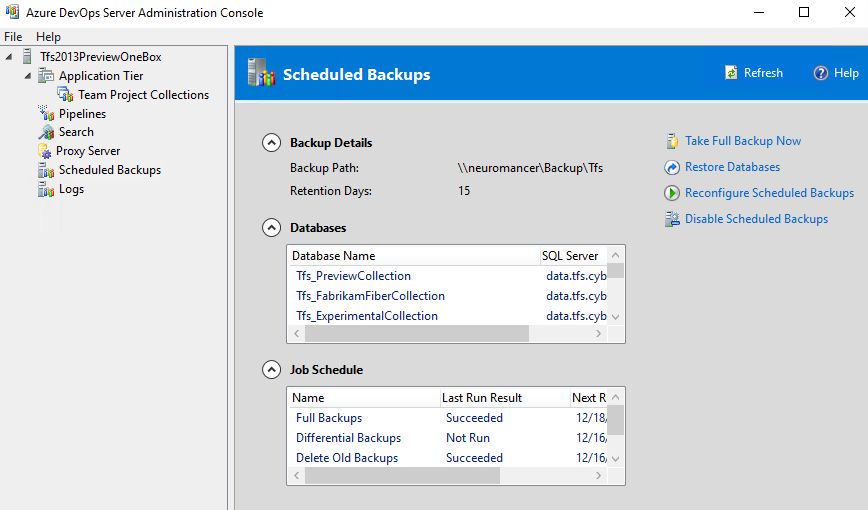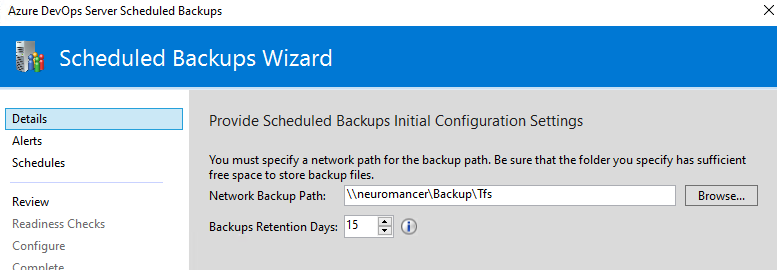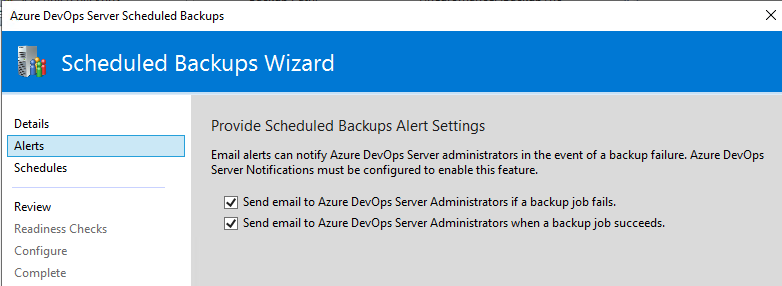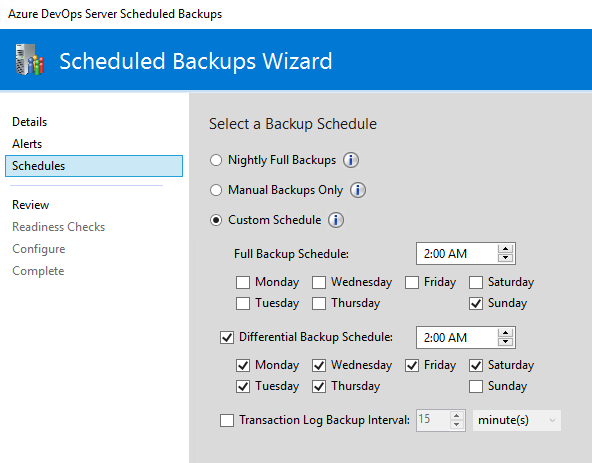Pills: Backup your Azure DevOps server
I cannot stress enough how important are backups and Azure DevOps Server is not an exception, especially because if you do not schedule backups you can have surprises.
Some days ago I got a call from a friend at customer site that experiences some problems with Azure DevOps server. The symptoms are strange server starts to become unresponsive, it is not possible even to login with Remote Desktop, it seems that there is some memory problem.
Being unable to diagnose by telephone the problem I suggest them to disable search services, sometimes it can happen that elastic search services consumes too much ram, since I did not have any other data, I suggests rebooting the machine forcibly from virtualization system and immediately connect with remote destop and disable elastic search service then try to better diagnose the problem.
For a couple of hours, this seemed to resolve the problem, but then suddenly they have problem again. I suggests rebooting the machine or trying to read windows event logs to understand if there are information on the problem.
It turns out (it is not the first time) that the disk is full.
Simplest installation of Azure DevOps Server is done in a single server with everything, it is really simple to manage, but you absolutely need to backup Sql Server.
This is a standard problem, if you do not backup Sql Server, transaction log file starts growing until it fills the entire disk. In an emergency situation you can change recovery mode to simple, shrink the transaction log file, and put back again recovery mode to full. This is an emergency procedure, the real solution is to schedule backup of Sql Server.
Backup of the entire Virtual Machine is now the standard, but it is not always the best solution.
In this particular situation a backup of the entire machine is taken in the night, so it is perfectly sufficient for the customer, but in this situation Sql Server transaction logs are going to fill the disk. It is not an immediate process, but after years is a problem that could happen.
If you manage a Azure DevOps server, I strongly encourage you to configure the official backup from its own management console, you will configure with few clicks and it can avoid lots of problem. It is really few clicks away, so it is really better to have it configured.
Figure 1: Backup configured in Azure DevOps server
In Figure 1 you can see a configured backup, but as you can see Administration console has a special node devoted to backup. Configuring a backup is simple, in Figure 2 you can see the wizard, first step is simply to give a network share where to store the backup. It is mandatory that the account that runs Azure DevOps server has write and read access to that location. You can also choose the retention period.
Figure 2: Step 1: Choose location
In step 2 you need to configure the alerts, it is really important that you configure them because you need to know if the backup are running correctly. If you will need the backup it is really bad to discover that no backup is in the expected location because the job is constantly failing since months.
Figure 3: Step 2: Configure alerts
In third and final step you can choose the schedule, as you can see you can create a really good differential backup, and you can also schedule a transaction log backup each 15 or less minutes. This is really important because it allows you to loose very few data in case of a VM disaster.
Figure 4: Step 3: Schedule configuration
Once everything is in place, you can simply relax, check your email for failed and successful jobs and you can rest assured that you can always restore your Azure DevOps server.
Backing up the entire Virtual Machine from the Hypervisor is a good strategy, but in my opinion you absolutely need to add the official backup as I shown before.
Advantages of the official backup are:
- You have an official, standardized and supported backup strategy. If you restore your VM and Azure DevOps server does not starts due to some problem in database, you are in an unsupported situation.
- Transaction log of Sql Server stops growing indefinitely, you will avoid Disk Full problems.
- You can also try restore of the backup on a different machine
- To simply try out restore procedures and verify how much time you need to restore everything and have your server up and running again
- to restore on a different machine to test a migration / update
- You can have much more granular backup, up to few minutes thanks to transaction log backup.
You can always have a backup of the entire VM, this strategy is not exclusive, but due to its simplicity, there is absolutely no reason not to spent a few clicks and some network share storage space to have an official and supported backup.
Gian Maria.




